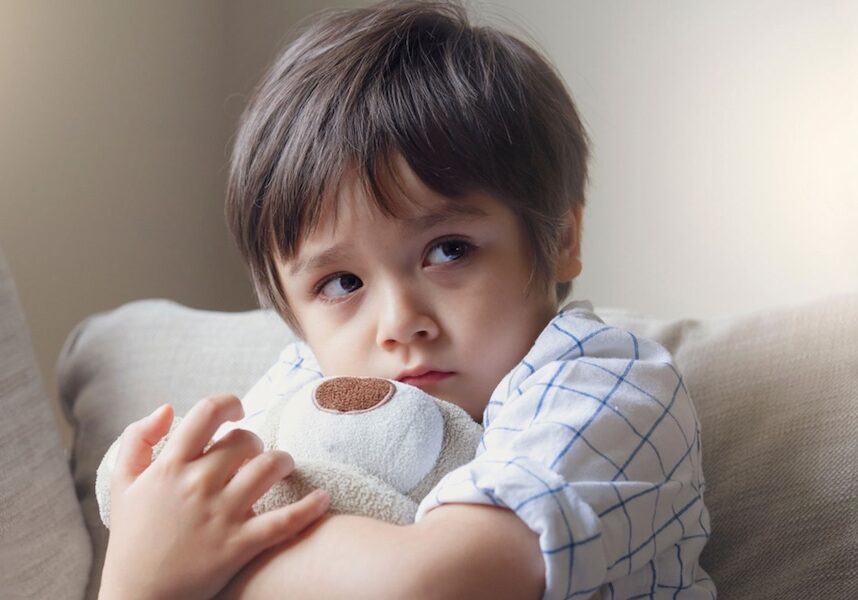Recognizing the Signs of Child Abuse
- October 6, 2023
- Resources

By Jamie Scaccia, FamilyForward Director of Assessment, Clinical Psychologist
Child abuse happens in every state, in every town, and in every income bracket. The unfortunate reality is that child abuse is often underreported and unnoticed by most adults, despite its prevalence in our communities.
At the start of the pandemic, there was a dramatic decrease in child abuse hotline reports. While that sounds positive, that decrease was more representative of fewer reporters witnessing the signs of abuse in the first place. Teachers could not see bruises over Zoom, doctors could not ask specific questions, and changes in behavior were less noticeable to other adults. Since April is National Child Abuse Prevention Month, let’s talk about recognizing signs of child abuse in your day-to-day life so you can advocate for children and families in your community!
Signs of Child Abuse and Neglect:
The signs of child abuse can be both obvious and subtle. Some clear indicators to look out for include injuries or bruises in various stages of healing, displaying fear of a particular caregiver or person, avoiding or being apprehensive of going home, wearing clothes that are not weather-appropriate, stealing or hiding food and appearing constantly hungry, and looking or smelling unclean.
These signs can manifest in many ways, so it is important to be conscious of the potential motivators underlying a child’s behavior. For example, if the child is caught stealing, it may be an attempt to meet their own needs if they cannot rely on a caregiver. Additionally, if a child has an inappropriate knowledge of sexual behavior, it might indicate that they have experienced sexual abuse.
No matter what, it is essential to take note of any sudden changes in behavior. If the child begins to appear more emotional or distracted, starts “acting out,” or if their school performance decreases, these could be indicators that something more is happening. On the other hand, the child may present as overly compliant, passive, and as attempting to care for other adults. In older children, these changes may look like skipping school, doing drugs, or behaving in a more sexual manner.
Aside from noticing changes in the child, consider how the child acts around other adults, particularly caregivers. Do they get nervous, fearful, or anxious around certain people? Do they try to avoid someone or somewhere? Does that adult speak about the child in a way that is inappropriate, overly controlling, rejecting, or hurtful? Oftentimes, children are more likely to be abused by someone they know and trust.
Lasting Effects:
Children and families experience a plethora of stressors and mental health challenges at different times. However, it is important to notice when the signs could indicate something more. Even a history of child abuse could lead to lasting symptoms that mirror a variety of conditions. For example:
- Hyperactivity could be masking hypervigilance towards anything that feels threatening or a need to know what is happening at all times to stay safe.
- Inattention might indicate being distracted by their home life and outside factors.
- Stealing food could mean the child is not getting fed at home or has a history of neglect that has instilled an innate drive to stockpile food, even years later.
- Tantrums and uncontrolled behavior could represent a lack of coping skills to manage their emotions because they are not being taught or cared for at home.
- Rude behavior may be protective to keep others at a distance and not too close.
- Daydreaming could be a way to distract from feeling challenged or stressed, which can be overwhelming on top of everything else.
- Frantic or avoidant behavior could be a sensitivity to sensory input.
Finally, it is important to recognize that while these may be signs of trauma, they can also be a function of other challenges that the child is facing. Aside from mental health concerns, poverty can also lead to unstable housing and food, fewer resources, or lack of access to clean clothes. It is important not to mistake one for the other but instead to be curious and interested in advocating for children and families.
Taking the Next Step:
If you suspect that a child you know is being abused, try to identify multiple signs discussed above. It is important to distinguish that you are not an investigator in these situations but an advocate for the safety and well-being of children and families. Do not attempt to confront the caregivers directly; instead, make it known to the child that you are a safe adult and a resource if they choose to seek you out. In addition, doctors, nurses, teachers, social workers, psychologists, and others are mandated reporters and must report signs of abuse and neglect – so these individuals can be resources if needed.
If you identify multiple signs of child abuse or neglect, the next step is to consult with the Child Abuse and Neglect Hotline at 1-800-392-3738 or online here. If there is an immediate danger, call 911 and do not let the child return home until authorities have deemed it safe for the child. When in doubt, it is always best to err on the side of caution when it comes to the safety of children and families.
While this is not an exhaustive list of the signs of child abuse and neglect, you can always call the hotline with an inquiry if you are unsure. Even if a call does not result in the confirmation of mistreatment, it can provide resources to a family in need. More importantly, preventing abuse is of utmost importance. Reducing stress and increasing access to resources is key to creating safer environments for children and families.
Click here to learn more about how FamilyForward’s community services are playing a critical role in the prevention and treatment of child abuse and neglect.
